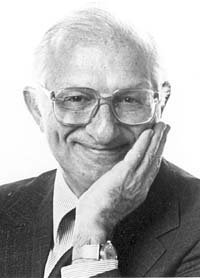Threes
By Simon Paul Miller (with additional material from Jeremy Miller)
Mel Helitzer states there are six essential ingredients for humour. I’m not convinced that every joke has all six of these ingredients, but I do think it could be a useful concept to assess and improve my jokes. Mel has an acronym to remember these ingredients, which is THREES. I’ll briefly outline them below, but for a lot more detail (and plenty of one-liner examples) you can read ‘Comedy Writing Secrets’. (A revised 3rd edition was released earlier this year almost immediately after I bought the 2nd edition!)
T is for Target.
“I’m not a good lover, but at least I’m fast.” (Drew Carey)
Who, or what, your joke is aimed at is a critical piece of information you need to know and how funny it makes your joke will depend on your target audience. Don’t forget that the target could be the person or character saying the line, often the case if you are doing stand-up or writing a sketch/sit-com.
H is for Hostility.
“Donald Trump is a confirmed liar, nothing he says is ever confirmed.”
The more hostile your audience is to the target, the funnier they will find it. You’ve probably noticed that you don’t even need a joke if your audience really hates that person. For example, just calling Health Secretary Jeremy Hunt a rude word that rhymes with Hunt will get a laugh from most junior Doctors, but Jeremy Hunt is less likely to be amused, so you need to choose the right target for your audience.
R is for Realism.
“What has four legs and flies? A dead horse.”
At the heart of many a joke lies a truth and, up to a point, the more bitter the truth, the bigger the laugh.
The first E is for Exaggeration.
“I’ve told you a million times, stop exaggerating!”
There may be truth in what is being said, but in a joke, the audience usually allows some embellishment. Understatement is also included in this category.
The second E is for Emotion.
“My father had a profound influence on me – he was a lunatic.” (Spike Milligan)
Emotion can be used in the set-up to trick the audience into a state of apprehension, which is then deflated by the punch.
S is for Surprise.
“Boo!” (Jeremy Miller)
I can’t take credit for the previous line, it was inserted by my son as I left my computer to answer the door. I’ll refer you to Daniel Page’s article, The 2 Fundamentals of Comedy Writing, which more than adequately covers this ingredient.
So, after you’ve written a joke, or sketch (or indeed any comedy piece), you could go through this list of ingredients like a checklist and see if you can adjust your piece to make it funnier…
- Is there a target I could add to this joke, or a different target, that would make it funnier to the joke’s target audience?
- Can I phrase the joke differently to make my audience more hostile to the target?
- Is the ‘truth’ in this joke visible enough (or too overstated)?
- Would exaggeration (or understatement) help?
- Can I add or increase an emotional hook for the audience?
- Have I maximised the impact of the surprise?
Alternatively, you can use them to rate your jokes. For example, if you need to trim down a list of one-liners to send into Newsjack, rating them against each of these ingredients gives you a way of comparing them and weeding out the weaker jokes. If your joke doesn’t score anything in all the categories, then it probably isn’t a joke – but if you can prove me wrong, please do in the comments section below.
Simon Paul Miller is the creator of The Rhyming Detective podcast.
You can buy Mel Helitzer’s book for yourself here:
Comedy Writing Secrets: How to Think Funny, Write Funny, Act Funny and Get Paid for it

